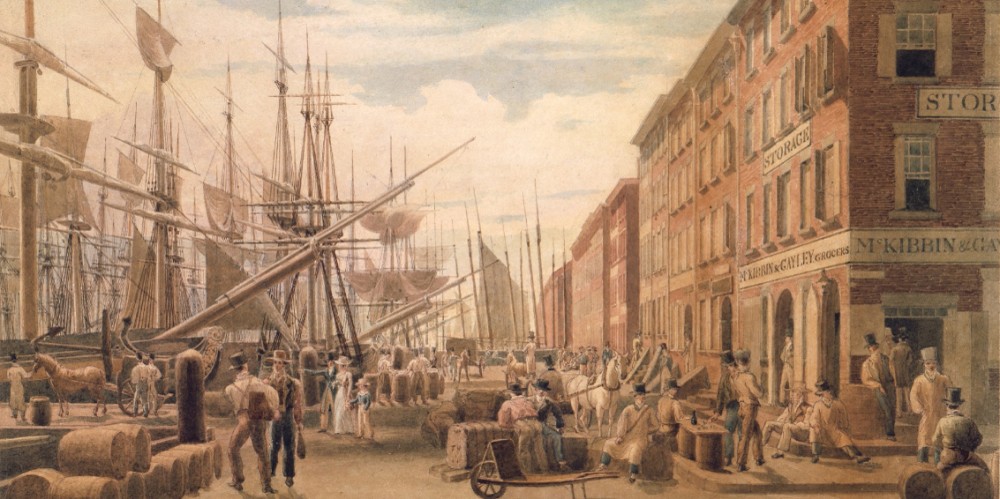Why learn about social and economic changes associated with the Industrial Revolution, including changes in transportation and urbanization?

Figure 1. William James Bennett, “View of South Street, from Maiden Lane, New York City,” ca. 1827, via Metropolitan Museum of New York
In the early decades of the nineteenth century, Americans’ endless initiative and zeal—what one Baltimore paper in 1815 called an “almost universal ambition to get forward”—remade the nation. Between the American Revolution and the Civil War, the old world of subsistence and survival died and a new nation was born which integrated the technologies of the Industrial Revolution into a new commercial economy. Steam power, the technology that moved ships, riverboats, and railroads, fueled the rise of American industrial manufacturing by powering mills and laying down national transportation networks. The market revolution turned America into a manufacturing and export powerhouse almost overnight.
The effects of this revolution reverberated across the country. More and more farmers started growing crops for profit rather than subsistence. Bustling factories and cities arose in the North, where enormous fortunes materialized for those who were able to take advantage of the new markets. A new middle class emerged, fueled by the idea of upward social mobility. As more American workers entered the cash economy, they were freed from the bonds of indentured servitude. But there were costs to this revolution. As northern textile factories boomed the demand for southern cotton did too, and southern enslaved persons were forced to keep pace with northern demand. Northern subsistence farmers suddenly became wage laborers bound to the whims of factory owners and the temperamental nature of the market.
The market revolution sparked not only explosive economic growth and new personal wealth but also created devastating economic depressions and a growing class of propertyless workers. Many Americans labored long hours for low wages, becoming trapped in an endless cycle of poverty. Some northern workers—often immigrant women—worked thirteen hours a day, six days a week. In the South, others labored in bondage as enslaved persons. Northern textile mills turned southern cotton into cheap cloth and, although many northern states had washed their hands of slavery, their factories fueled the demand for southern cotton, thus ensuring the continued existence of the American slave system.
As the new industrial economy evolved, the United States was wrenched in different directions, becoming simultaneously a nation of free-market laborers and enslaved families, of vast wealth and abject poverty, and of endless promise and untold perils.
Candela Citations
- American Yawp. Located at: http://www.americanyawp.com/index.html. Project: American Yawp. License: CC BY-SA: Attribution-ShareAlike